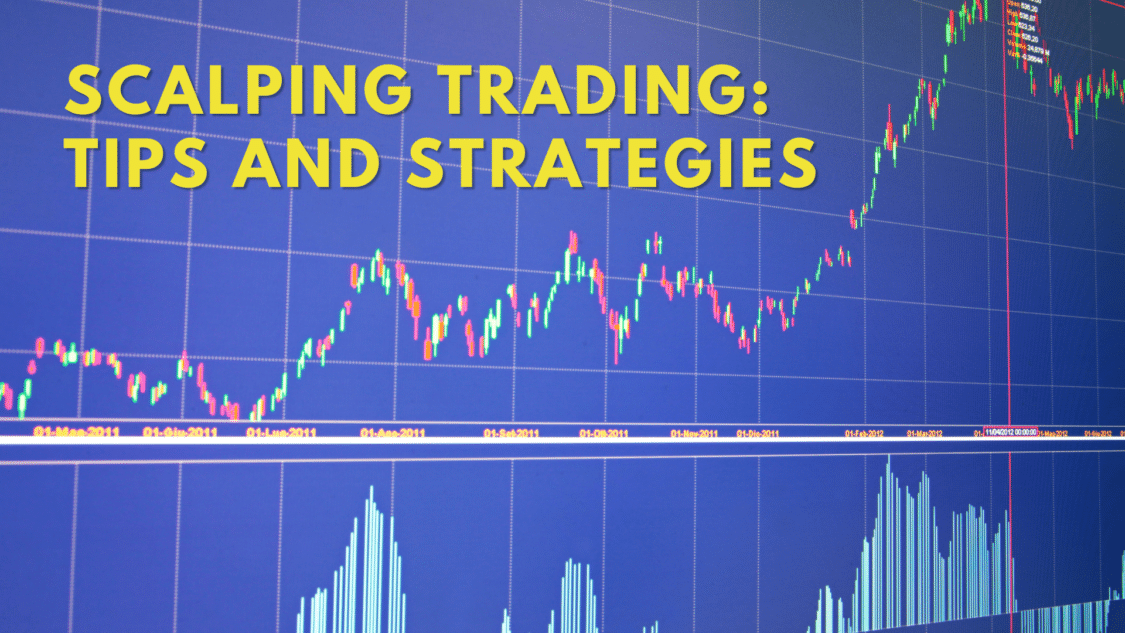Scalping is a trading strategy aiming to profit from small price movements. Scalp traders are not targeting big profits. Instead, they aim for small gains repeatedly. Being this the case, scalp traders place many trades in a brief span of time.

The idea behind this is that the outcome over time will be significant by stocking up on all these small gains. Scalpers will often rely on technical rather than fundamental analysis before performing another trade. Technical analysis is a type of analysis that predicts the future of the market based on previous price action. Fundamental analysis examines the quantitative and qualitative factors. It determines whether or not the price of an asset listed is reasonable, undervalued, or overvalued. The strategy scalpers use is not recommended to anyone because they need a broad understanding of the market and quick decision-making skills.
How do Scalpers make money?
Scalping is essentially finding small opportunities in the market and growing from there. Most often they do not invest in large ones but work on several small investments and gain profit at a slower pace. Scalpers have specific strategies, and if these strategies get known by the public, they will become unprofitable. They create and, most importantly, test each strategy individually to see its success rate. Therefore, scalpers usually keep their strategies private.

Scalpers usually make transactions reasonably quickly, bringing high-frequency trading bots into the picture. They work promptly and efficiently and can process a lot of data that most humans won’t be able to do as fast. Scalpers don’t come with a book of guidelines; each has its strategy, and they all differ substantially. There are specific guidelines that can be considered when setting up your strategy.
Here are some additional ways in which scalpers make money:
- Small price movements: Scalpers aim to capture small price movements in their trading assets. They buy and sell quickly, resulting in them holding positions for a few seconds or minutes to profit from minimal price changes.
- High trading frequency: Scalpers execute a significant number of trades every day, sometimes in the hundreds or thousands. This increased trading frequency allows them to gain small profits on every trade.
- Leverage: Some scalpers use leverage to increase their buying power and boost their potential profits. Although leverage comes with risks, it enables traders to control larger positions with less capital.
- Liquid markets: Scalpers often focus on trading assets with high liquidity, such as stocks, currencies, and futures contracts. These markets offer many trading opportunities throughout the day, which allows scalpers to execute trades quickly and frequently.
- Arbitrage: Scalpers may also look for arbitrage opportunities. They can buy an asset in one market and sell it for a higher price in another. This strategy requires a deep and detailed understanding of market dynamics and the ability to perform trades quickly.
- Ticket scalping: Scalpers purchase tickets for popular events at face value and resell them for significantly higher to those willing to pay a premium for the convenience of buying tickets from a third party. This strategy is controversial and is illegal in some jurisdictions.
Scalping trading strategies:
Discretionary and systematic trading refer to two different approaches to decision-making and execution with scalp trading. The discretionary traders make a decision then and there. As the market unfolds before their eyes, they decide on the spot. They don’t necessarily have a set time to enter the system and exit; however, their decisions are based on the conditions at hand. Discretionary traders rely on intuition and gut feeling, and the rules are less lenient.

Discretionary trading is how a trader makes decisions based on their judgment and experience in the field. The trader uses their intuition and market knowledge to decide when is best to enter or exit a trade. This approach requires a high level of expertise, experience, and the ability to make quick decisions under high pressure.
On the other hand, systematic trading is a more rule-based approach where a trader uses pre-defined rules and algorithms to decide when to enter or exit a trade. With systematic trading, the trader uses a set of predetermined rules to identify trading opportunities and complete trades. This approach can be more objective and less subjective than discretionary trading, but it requires some backtesting and optimization to develop successful trading algorithms.
Scalping can be done using either a discretionary or systematic approach. Some scalpers rely on their judgment and experience to identify trading opportunities, while others rather use algorithms and technical indicators to make objective trading decisions. Ultimately, the choice between discretionary and systematic trading will depend on the trader’s preferences, skills, and experience in the industry.
Below is a few common scalping trading strategies used by traders:
- Breakout Scalping: This strategy involves identifying support and resistance levels and trading breakouts. Traders using this strategy look for price movements that break above resistance levels or under support levels. Then execute a trade in the direction of the breakout. The idea behind this strategy is that once a price passes the support or resistance level, it may continue in the same direction, which can potentially win a quick profit for the trader.
- Momentum Scalping: This strategy involves identifying stocks or other assets exhibiting strong momentum in a particular direction. Traders may use technical indicators, like moving averages or the Relative Strength Index (RSI), to identify momentum. Once doing so, they execute trades in the direction of the trend. The idea behind this strategy is that trends tend to linger, so if a stock or asset exhibits strong momentum in one way, it may continue this way for a certain period, providing an excellent opportunity for a quick profit.
- News Scalping: This strategy involves trading based on news events and announcements that can cause significant price movements in the market. Traders often use news feeds and social media to stay up-to-date on market news. This is followed by trades based on the expected market reaction. The idea behind this is that news events can cause sudden and significant price fluctuations, providing an opportunity for a quick profit.
- Range Scalping: This strategy involves trading within a defined range of prices. Traders may look for price movements that bounce off of support and resistance levels within the range and then execute trades in the direction of the bounce. The idea behind this strategy is that prices oscillate within a defined range. This way, traders can profit by buying at the low end of the range and selling at the high end.
- Scalping with Moving Averages: This strategy involves using moving averages to identify trends and trading in the direction of the trend. Traders may use a combination of short and long-term moving averages to identify entry and exit points for trades. The idea of scalping with moving averages is that moving averages can help filter out market noise and identify long-term trends, providing an opportunity for a quick profit. Traders may use different moving average combinations depending on their trading timeframe.
Conclusion:
Scalping is a strategy of trading that requires knowledge and experience with the system—jumping into it and trying its outcomes with risk factors. Scalping trading is a fast-paced and exciting way to trade the financial markets. It involves making quick trades to profit from small price movements. Scalping is possible on various assets, including stocks, currencies, commodities, and cryptocurrencies, and can be done using multiple strategies, including breakout scalping, momentum scalping, news scalping, range scalping, and scalping with moving averages.
A main advantage of scalping is that it allows traders to make quick profits without needing to hold a position for long periods. This can appeal to traders looking for a more active trading style and wanting to generate income regularly. Additionally, scalping allows traders to take advantage of short-term price movements that may not be visible on longer timeframes.However, scalping also comes with its own set of challenges and risks, like every strategy. Scalping requires a high level of skill, experience, and discipline. Traders need a solid understanding of technical analysis and market fundamentals and the ability to manage risk effectively.
Another challenge of scalping is the high level of competition in the market. While many traders use scalping strategies, the market can become highly competitive. This can make it difficult to execute trades at the desired price and may lead to missed opportunities or losses if trades are not completed fast.
Despite these challenges, scalping can be a profitable trading strategy for those who can succeed in mastering it. They must also manage risk effectively, using stop-loss orders in addition to other risk management tools to limit losses and protect profits.
Overall, scalping trading is a challenging but potentially rewarding way to trade the financial markets. As with any trading strategy, it’s essential to perform complete research and analysis before going forth with any trades and to manage risk effectively to protect your capital constantly.
For more news updates, visit our homepage now and see our latest news article. Want to learn more about trading? Visit our education page now and learn for FREE!
Learn more about Atompix – The New Trading Platform for Brokers

